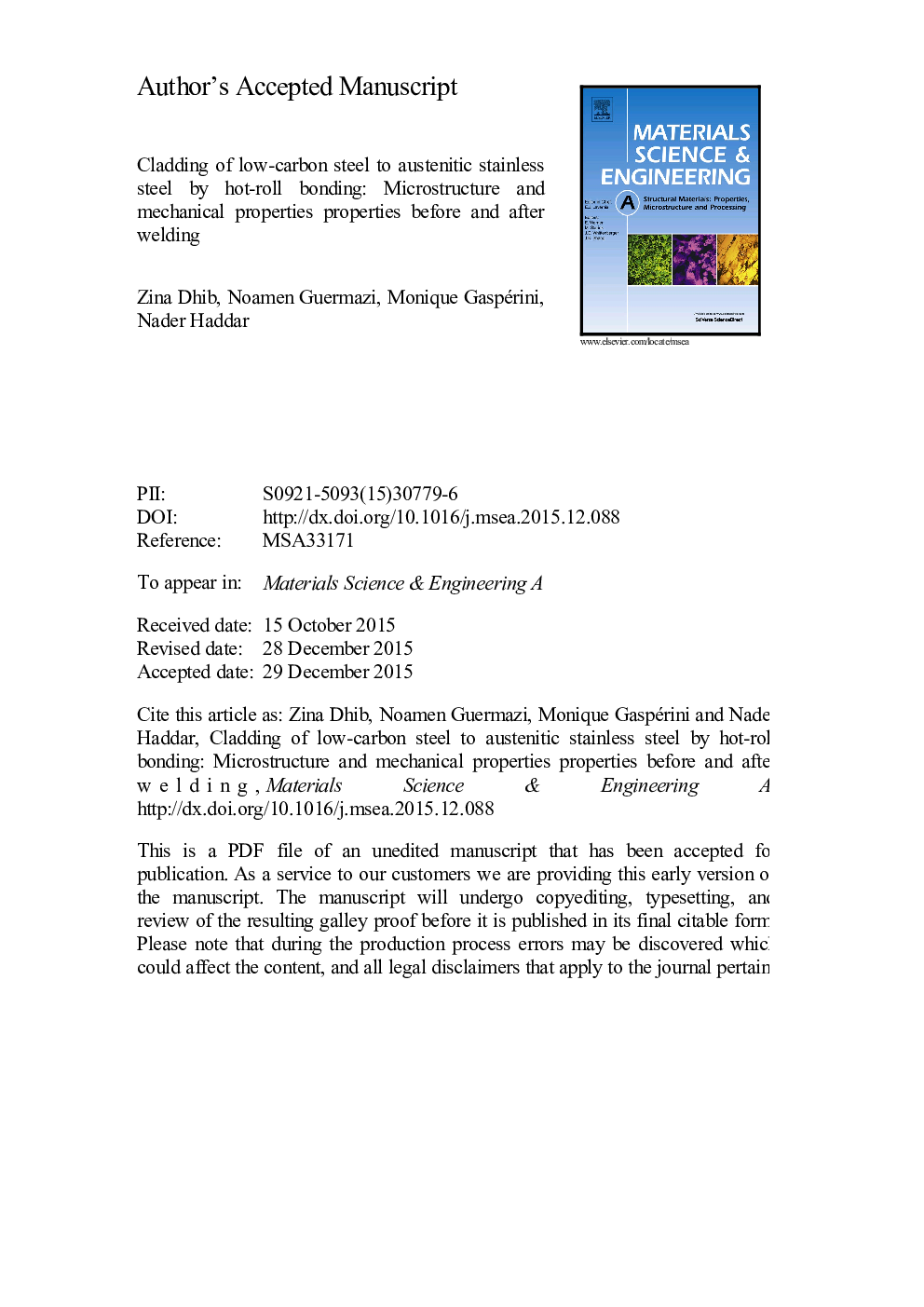| Article ID | Journal | Published Year | Pages | File Type |
|---|---|---|---|---|
| 1573584 | Materials Science and Engineering: A | 2016 | 33 Pages |
Abstract
Results on the microstructure, microhardness and mechanical strength were reported. Experimental studies showed that austenitic stainless steel AISI 316 (clad layer) could be cladded to low-carbon steel A283 (parent metal) with a good quality of bonding by hot-roll bonding. The bond interface of the cladded metals indicated that there is an intermediate zone between the clad layer and parent metal with heterogeneous microstructures due to the carbon diffusion. It was also found that microhardness measured from the clad layer to the parent metal showed an abrupt change adjacent to the interface due to a coarse grained soft ferritic band near the interface with larger microhardness than the adjacent metals. Tensile results revealed that the bonding was acceptable in all weld samples. It was also observed in bending tests that interfaces of bonded samples were safely carried out for some welding configurations. Toughness strength of the cladded metals at a given test temperature was found significantly higher than that of parent plate alone because of the high impact toughness of austenitic stainless steel layer. Consequently, mechanical properties of the low-carbon steel can be improved by hot-roll bonding with austenitic stainless steel.
Related Topics
Physical Sciences and Engineering
Materials Science
Materials Science (General)
Authors
Zina Dhib, Noamen Guermazi, Monique Gaspérini, Nader Haddar,
